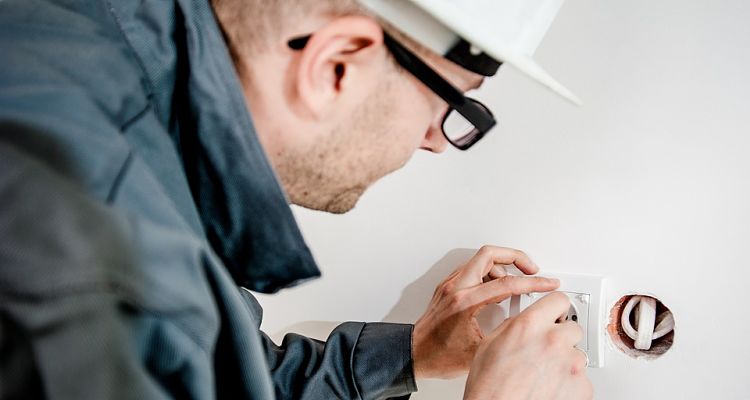
Self-moving has become increasingly popular, offering significant savings compared to hiring professional movers. However, it also carries risks, particularly for first-timers. The U.S. Department of Transportation reports that DIY movers experience injuries at a rate of 1 in 5 moves.
Leveraging my years of expertise, I’m going to break down the critical safety tips for a DIY moving experience. I’ve navigated through numerous moves myself, and I’ll share the strategies that have consistently ensured a safe and efficient process.
The Challenge of DIY Moving
Most moving companies have professional movers on hand who can twist, turn, lift, and bend their bodies this way to wriggle out furniture and other household items even from the tightest spaces.
To further illuminate the challenge of DIY moving, it’s crucial to understand the physical and logistical demands it places on individuals. Unlike professional movers, who have access to a wide range of tools and equipment designed for efficient and safe moving, people who plan on a DIY move often lack these resources. This gap can lead to an increased risk of injury and damage to belongings. To mitigate these risks, consider conducting a thorough inventory of your items before the move.
This step not only helps in organizing and packing but also in determining the specific tools and equipment needed for safely moving each item. Additionally, leveraging technology, such as moving apps that offer organizational tools and reminders, can streamline the planning process and reduce the stress associated with moving day logistics.
Break down the moving process into four stages: planning, packing, moving day, and unpacking, to tackle each phase with detailed attention to safety and organization.
Conduct a risk assessment of your home and the items you plan to move. Identify potentially hazardous items and areas in your home that could pose risks during the move, such as narrow staircases or slippery floors. Implement preventive measures, such as non-slip mats and temporary barriers, to mitigate these risks.
Preparing for Your Self-Move
When you decide on a self-move you will be moving the items yourself with help from a few friends and family. Do you think you would be equipped for the job? To get prepared for a self-move, there are a few things that should be on your “must-have” list to pull off a successful move.
In preparing for your self-move, beyond the basic “must-have” list, it’s essential to plan for contingencies. Create a detailed moving day timeline that includes breaks and allows for unexpected delays. This schedule should be shared with all participants to ensure everyone is on the same page. Furthermore, assigning specific roles to your friends and family based on their strengths and abilities can enhance efficiency and safety. For example, those with experience in heavy lifting can be tasked with moving larger items, while others might be better suited for packing or organizing.
Mapping out a clear plan for the moving day, including the order of items to be moved and designated roles for each helper, can significantly streamline the moving process and reduce the risk of mishaps.
Essential Moving Equipment
Foremost, you would need to arm yourself with the right type of moving equipment to secure and lift your items to take them safely to the moving vehicle. You should first protect your body by investing in a few back braces for you and your helpers so that bending and stretching will not leave a lot of you in great pain after the move.
Investing in the right moving equipment is non-negotiable for a safe DIY move. A high-quality appliance dolly equipped with secure straps is indispensable for safely transporting heavy and bulky items. Pair this with professional-grade moving blankets to wrap and protect your furniture. Not only do these blankets shield items from scratches and dents, but they also prevent sharp edges from causing injury during the move.
Incorporating a detailed checklist of safety tips for DIY moves ensures every step, from packing to unloading, is conducted with the utmost care, minimizing risks.
Warm-Up Exercises
Before using the brace, warm up with exercises to stretch your muscles and prepare your body for the move. Exercise would not only help in loosening your muscles, but it would also prevent joint and body aches after the move.
Before the physical work begins, engage in a series of warm-up exercises targeting the muscles most used during a move. Start with 5–10 minutes of light cardio, such as walking or jogging, to increase your heart rate. Follow up with dynamic stretches focusing on the legs, back, and arms to prepare your body for lifting, reducing the risk of muscle strains or sprains.
Using Appliance Dolly and Moving Blankets
Another important item during your move would be an appliance dolly, which can be purchased as well as rented. It is ideal for carrying household items that are both big and small. The dolly is on wheels and has straps on them to perfectly secure any items lifted. To protect your household items from getting scratched or damaged during the move, you would also need to get some moving blankets, which are a good investment since they can last you up to 10 years.
To safely use an appliance dolly, ensure that all items are securely strapped in place before moving. For added protection, wrap sharp or delicate items in moving blankets before strapping them onto the dolly. This not only prevents damage to the items but also protects you and your helpers from potential injuries caused by sharp edges or shifting loads.
Furniture Measurement and Disassembly
Preventing bad mishaps before they occur will increase moving-day safety. Making sure the biggest pieces of furniture you’re moving will pass through all doors and staircases without any issues is one way to go about it.
Do the arithmetic after measuring the entrances and hallways along the proposed exit path and the furniture pieces themselves. If the figures indicate danger, safely disassemble your heaviest furniture pieces before moving them out of the house.
Even how you dress for the move should also be taken into consideration, as moving gurus would tell you. The foremost is that you wear comfortable shoes to go back and forth and one that is easy on your feet and back. In addition, it is advised to avoid wearing loose clothing, as you can easily get caught up in items that may be destroyed in the process. You should also avoid wearing jewelry while you love it, for the risk of losing it or having it hooked up to something that may cause it to come undone.
Handling Sharp Objects Safely
Secure all knives and other pointed devices, such as garden scissors, before moving. We advise encasing sharp objects in packing paper and bubble wrap for the best outcomes. Wrap the entire object with a dish towel and fasten it with a rubber band if the knife is really sharp.
Even though it can seem like a straightforward procedure, it’s one of the best ways to prevent cuts and accidents while packing and unpacking. Even better, compared to their unwrapped counterparts, blades that have been wrapped are less likely to pierce cardboard boxes and lead to dangerous situations.
Chemicals and Hazardous Materials
We often neglect household chemicals and hazardous objects when doing DIY moves. Not ordinary goods, but silent threats in your garage or under your sink. Let’s discuss how to handle these risks to make your relocation safe and efficient.
Identifying these objects is crucial. This includes cleaning materials, paint, batteries, and plant fertilizer. Items like these require careful handling. The goal? To avoid spills, exposure, and accidents that could ruin your move. They need specific packaging. Use original, sealed containers whenever feasible. To avoid spills, transfer the contents to a well-labeled, durable container if the original is missing or damaged. Taping battery ends prevents short circuits. To avoid contamination, store paints and solvents in leak-proof containers and away from other items.
Transporting these goods requires extra caution. You shouldn’t dump them in with your other boxes. Instead, transport them separately in a well-ventilated vehicle. This reduces the possibility of fumes or spillage damaging your goods or health. Local trash management agencies can advise on the disposal or shipment of particular objects. This step gives you peace of mind that you’ve protected yourself, your family, and your belongings during the relocation.
Packing and Box Reinforcement
Make sure the cardboard boxes holding your valuables won’t collapse due to their weight. Remember to reinforce the bottom of every box with double-taping before packing. This is one of the most important pieces of moving-day safety advice. Especially when utilizing used moving boxes, you should take this extra precaution.
Use sturdy, high-quality boxes to prevent collapses and spills. Proper packing and reinforcement protect your belongings and make loading and unloading safer and more efficient.
Strategic Packing Techniques for Injury Prevention
Packing properly is your first defense against injuries. How you fill boxes matters. To avoid box tipping, put heavier items at the bottom and lighter ones on top. This safeguards your valuables and makes lifting safer. Lifting a box that seems light turns out to be heavy on one side. Those are simple ways to strain your back. Balance is vital. Keep larger boxes for pillows and linens and smaller ones for books and heavy stuff. This reduces overpacking and hazards.
Labeling expands this method. Label each box with its contents and room, but don’t stop. Label crates with heavy items “Heavy”. This simple step tells you to brace before lifting, reducing back injuries. Back injuries account for over 20% of all moving-related injuries, with cuts and bruises following closely, based on data from the National Safety Council. Consider specific containers or padding for fragile things. They’re worth it since they protect your valuables and prevent wounds and scrapes from damaged goods’ sharp edges.
Keeping Kids and Pets Safe
Keeping kids and dogs safe and out of the way is crucial. Imagine carrying a heavy couch down a narrow stairway as a curious toddler or pet runs between your legs. Real hazards and serious repercussions exist for children and everyone else. This challenge—how to handle it? It’s easier than you think and requires some creativity and planning.
First, secure kids and pets away from the action. This may be a room you’ve already cleared out or a friend’s house where they can spend the day. Fill it with kids’ favorite toys, games, and snacks or pets’ comfy bedding and chew toys. This space should be so interesting that they won’t miss the move. Ask a family member or hire a babysitter to keep kids occupied and safe. This protects them and lets you focus on the task at hand. However, pets may benefit from a pet sitter or daycare. This way, they’re safe and having fun.
Keeping a First Aid Kit Handy
Moving is stressful, often resulting in bodily aches and pains, especially during a self-move. Even during the move, you may develop a headache, and someone could get injured while moving a sharp item. For that, you should always have a first aid kit on hand that is equipped with everything from bandages to pain relievers.
Prepare for minor injuries or ailments by keeping a well-stocked first aid kit accessible throughout the move. Include items like band-aids, antiseptic wipes, pain relievers, and any personal medications. Quick access to these supplies ensures minor mishaps don’t turn into major interruptions.
Staying Hydrated and Energized
Above all, ensure that you have enough refreshments and snacks to take you and your moving crew throughout the day.
Maintain high energy levels and hydration throughout the day. Stock up on water bottles and healthy snacks like fruit, nuts, and energy bars. Regular breaks for hydration and nourishment are vital, especially during physically demanding tasks or in hot weather.
Did you know that dehydration and fatigue significantly increase the risk of accidents and injuries during a move? Taking regular breaks, staying hydrated, and not skipping meals can keep energy levels up and concentration sharp, reducing the likelihood of accidents.
Emergency Preparedness: What to Do When Things Go Wrong
Having equipment and supplies isn’t enough—you also need the ability to quickly handle unexpected issues during a DIY move. Imagine packing up as a strong rain threatens to soak your possessions. Ingenuity helps here. Get some large, robust trash bags and waterproof bins ahead of time. As you rush from house to truck, they can protect your items from the elements.
Imagine an injury or car breakdown. A first aid bag and emergency contacts are essential, but you can do more. Develop a team communication strategy. Assign a point person who knows the local hospitals or has the Uber app for speedy transportation in case of injury. For vehicle issues, you need the roadside assistance number and the nearest truck rental or repair shop. Even if surprises arise, this level of readiness ensures a clear response plan, reducing stress and keeping your move on track.
Focusing on safety for DIY moves involves not just physical protection but also mental readiness, ensuring that decision-making under stress keeps safety at the forefront.
Post-Move Safety
After arriving at your new home, the journey isn’t over. The fun begins when you unpack and set up your space, but safety is always important.
Organizing furniture and installing appliances may appear simple, but it’s easy to overlook problems. For instance, consider room flow when placing furniture. Avoid stumbles and falls by clearing walkways. Preventing dressers and bookcases from falling requires anchoring them to the wall, a step often overlooked but crucial in homes with young explorers. Make sure appliance installations follow manufacturer instructions. Incorrect setup might cause faults and hazards. For instance, leveling your fridge and connecting your washer might prevent water leaks.
Sharp tools and cleaning materials should be put away quickly rather than left in boxes where they could hurt. Put tools and chemicals away from kids and pets. Learn about your new home’s emergency exits and plans. Many people forget how to rapidly flee their house in an emergency. Unpack carefully, looking for broken things. If you handle or dispose of these objects correctly, your fresh start will be safe and joyful.
Extra Safety Tips for a Smooth DIY Moving Experience
- Did you know that the most common injuries during DIY moving are not from lifting heavy items but from improper lifting techniques? Research shows that bending at the waist instead of using a squatting position with a straight back can increase the risk of back injuries significantly. Proper lifting techniques, such as keeping items close to the body and using the legs to lift, can prevent these common mishaps.
- Did you know that the timing of your move can impact safety? Moving during late spring through early fall offers longer daylight hours and typically more stable weather conditions, reducing the risks associated with moving in the dark or during winter’s icy conditions. Planning your move for these times can enhance safety for everyone involved.
- Did you know that about 20% of moving injuries are due to slips, trips, and falls? This is often due to cluttered pathways and not securing rugs and cords. Clearing paths and securing loose items can drastically reduce the chance of these accidents.
- Did you know that the weight of a standard moving box should not exceed 50 pounds for safety reasons? Overpacking boxes not only makes them more difficult to move but also increases the risk of the bottom giving out, leading to potential injury and damage to items.
To Conclude
This look at DIY moving safety shows that injury-free moves require more than muscle and desire. Proper lifting skills, seasonal planning, and proper packing are needed. Preparation and attentiveness during moving are important due to common dangers like slips, stumbles, and overpacking, as well as the need for hydration and rest. With these tips, you can confidently handle the complexity of a DIY relocation, making it safer for everyone. This complete strategy increases safety and equips people to face relocation challenges, making the move to their new home safer and easier.





Another great tip that i found helps me during a move is to use the GripSystem. This is a moving strap system and it has helped me tremendously. It has allowed me to move the objects safely and helped me use proper lifting techniques. Instead of lifting with my back it helped me lift with my legs and the back support it has helped so much! I wasn’t even sore the next day, which normally i am…lol… You can find them at http://www.gripsystem.com.